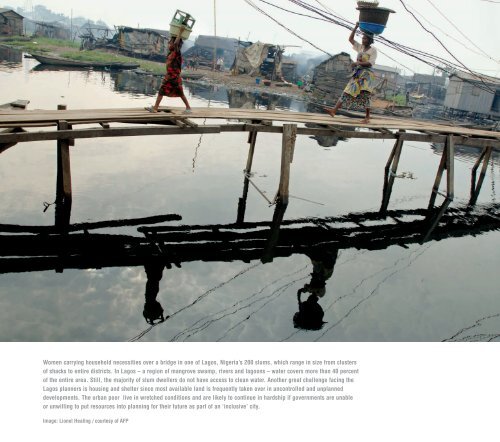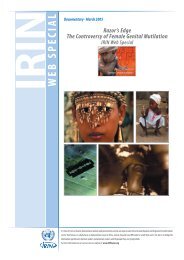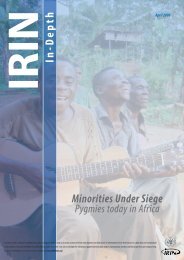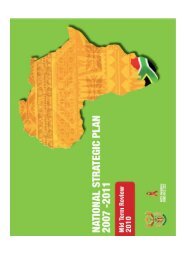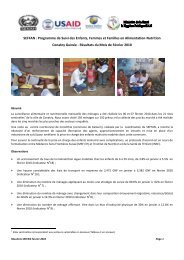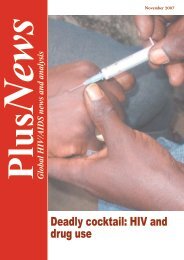Buses drive through crowded Oshodi market. Lagos is ... - IRIN
Buses drive through crowded Oshodi market. Lagos is ... - IRIN
Buses drive through crowded Oshodi market. Lagos is ... - IRIN
You also want an ePaper? Increase the reach of your titles
YUMPU automatically turns print PDFs into web optimized ePapers that Google loves.
Women carrying household necessities over a bridge in one of <strong>Lagos</strong>, Nigeria’s 200 slums, which range in size from clusters<br />
of shacks to entire d<strong>is</strong>tricts. In <strong>Lagos</strong> – a region of mangrove swamp, rivers and lagoons – water covers more than 40 percent<br />
of the entire area. Still, the majority of slum dwellers do not have access to clean water. Another great challenge facing the<br />
<strong>Lagos</strong> planners <strong>is</strong> housing and shelter since most available land <strong>is</strong> frequently taken over in uncontrolled and unplanned<br />
developments. The urban poor live in wretched conditions and are likely to continue in hardship if governments are unable<br />
or unwilling to put resources into planning for their future as part of an ‘inclusive’ city.<br />
Image: Lionel Healing / courtesy of AFP


